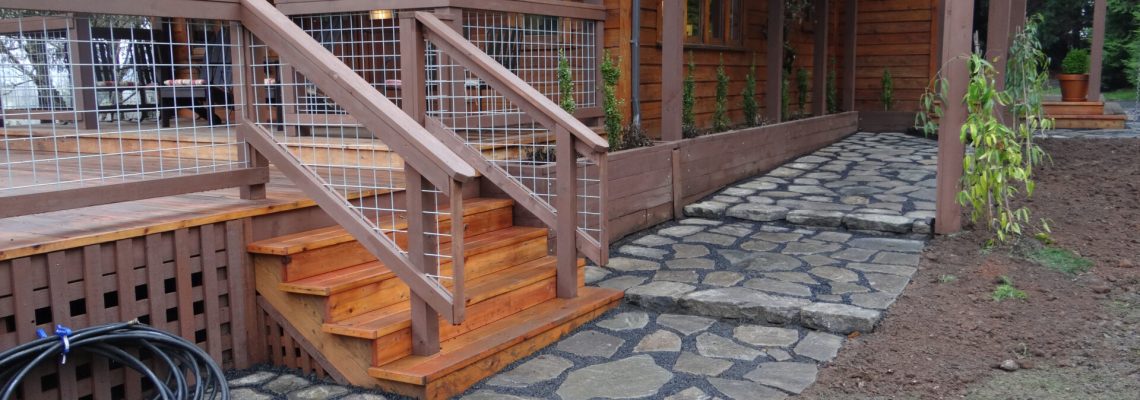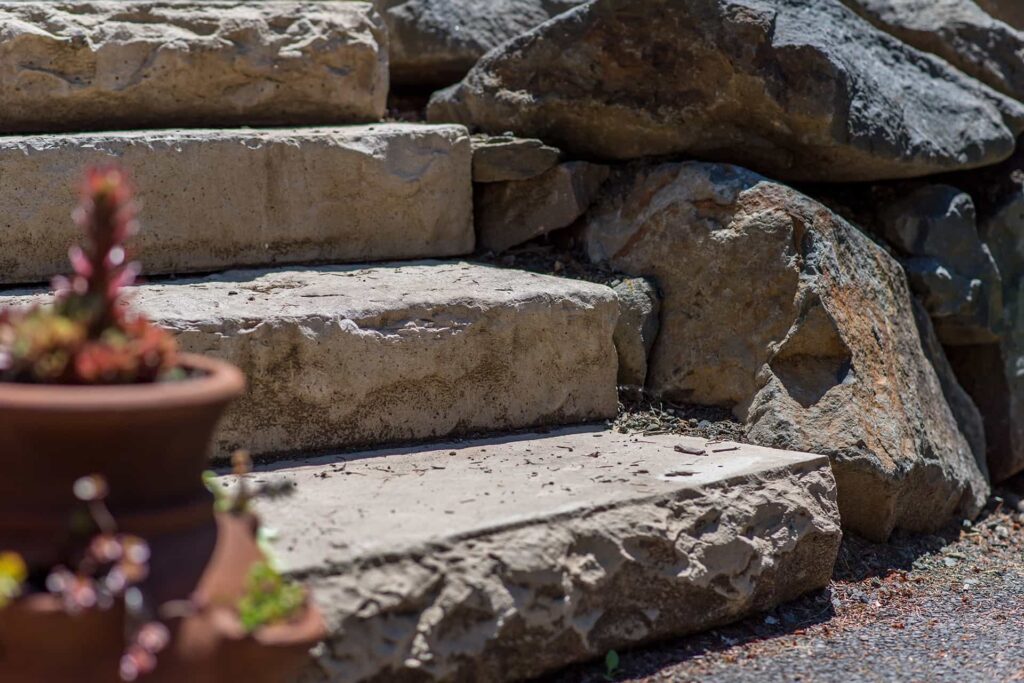Welcome to a comprehensive guide on using stone paving to create a stunning walkway for your home’s entryway. In this article, we will explore the benefits of stone paving, guide you through the process of installation, and provide valuable tips on maintenance and enhancement. Get ready to transform your walkway into a beautiful and inviting space.
A well-designed walkway adds charm and character to your home while providing a functional path for guests. Stone paving offers an excellent choice for creating an impressive entryway. Its natural beauty, durability, and versatility make it a popular option among homeowners. Whether you prefer a rustic, traditional, or contemporary look, stone paving can be tailored to suit your style.
Benefits of Stone Paving for Walkways
Stone paving offers numerous advantages for walkways. It not only enhances the visual appeal of your home but also provides a range of practical benefits. The durability of stone ensures longevity, even under heavy foot traffic. Additionally, stone paving is low maintenance, resistant to weather conditions, and can increase the value of your property.
Choosing the Right Stone Design for Your Walkway
Selecting the right stone is crucial for achieving the desired aesthetic and functional qualities. Consider factors such as color, texture, size, and durability when choosing the stone for your walkway. Popular options include granite, limestone, sandstone, and slate, each with its unique characteristics. Take into account the overall design theme of your home and the surrounding landscape.
Planning and Designing Your Walkway
Proper planning and design are essential to create a walkway that seamlessly integrates with your property. Consider the following aspects during the planning phase:
Determining the Walkway Layout
Assess the available space and determine the best route for your walkway. Consider factors such as existing features
such as trees, flower beds, and the layout of your outdoor space. Aim for a design that provides a practical and visually pleasing pathway.
Considering the Walkway Width
The width of your walkway should be suitable for the anticipated foot traffic. A width of at least 3 feet allows for comfortable passage of individuals and accommodates items like strollers or wheelchairs if necessary.
Selecting a Pattern or Layout Design
Choose a pattern or layout design that complements the architectural style of your home. Popular options include straight, curved, herringbone, or basket weave patterns. Experiment with different options to find the one that best suits your taste and enhances the overall aesthetics of your entryway.
Preparing the Ground for Installation
Before installing the stone paving, proper ground preparation is vital to ensure a stable and long-lasting walkway. Follow these steps:
Clearing the Pathway
Remove any existing vegetation, rocks, or debris from the path where the walkway will be installed. Clearing the area ensures a clean foundation for the stone paving.
Leveling the Ground
Use a shovel or a garden rake to level the ground along the path. Remove any uneven spots or high points to create a smooth surface for the stone installation.
Installing Edging
Installing edging along the sides of the walkway helps to contain the stone and prevent shifting or spreading over time. Choose edging materials that complement the overall design and provide a clean and finished look to the walkway.
Installing the Stone Paving
Proper installation techniques are crucial for achieving a professional-looking walkway. Follow these steps for a successful installation:
Preparing the Base
Create a stable base for the stone paving by digging a trench of about 6 inches deep. Fill the trench with a layer of crushed stone or gravel, and compact it using a tamper or plate compactor. This base layer provides stability and helps with drainage.
Laying the Stones
Place the stones carefully on top of the prepared base, starting from one end of the walkway. Arrange them according to your chosen pattern, ensuring proper alignment and spacing between each stone. Adjust the positioning as necessary to achieve a visually appealing and even surface.
Ensuring Proper Alignment and Spacing
Maintain consistent alignment and spacing throughout the walkway to create a cohesive and visually pleasing design. Use a level to check the stones’ alignment and a spacer to ensure consistent spacing between them.
Filling the Joints
Filling the joints between the stones not only enhances the overall appearance but also helps to stabilize the walkway. Follow these steps for effective joint filling:
Choosing the Right Jointing Material
Select a jointing material that suits your preferences and complements the stone paving. Common options include polymeric sand, stone dust, or mortar. Consider factors such as durability, color, and ease of application when making your choice.
Applying the Jointing Material
Carefully apply the jointing material into the gaps between the stones, ensuring it fills the entire joint. Use a broom or brush to remove any excess material from the stone surface and create a neat finish.
Properly Finishing the Joints
After applying the jointing material, mist the area with water to activate any polymers or set the jointing material. Follow the manufacturer’s instructions for curing time and any additional steps required to finish the joints properly.
Sealing and Protecting Your Stone Paving
Sealing your stone paving helps to protect it from stains, moisture, and weathering, while also enhancing its natural beauty. Follow these steps to seal your walkway:
Understanding the Benefits of Sealing
Sealing creates a protective barrier on the stone surface, preventing the absorption of liquids
that can cause stains and damage. It also helps to preserve the color and appearance of the stone over time.
Selecting the Right Sealer
Choose a high-quality sealer specifically designed for stone paving. Consider factors such as the type of stone, desired level of gloss or matte finish, and the sealer’s ability to protect against UV rays and water damage.
Applying the Sealer
Before applying the sealer, ensure that the stone paving is clean and dry. Follow the manufacturer’s instructions for the sealer application process. Typically, it involves using a brush, roller, or sprayer to evenly apply the sealer onto the surface. Allow the sealer to dry completely according to the recommended drying time.
Maintaining Your Stone Walkway
Proper maintenance is essential to keep your stone walkway looking new and beautiful for years to come. Follow these maintenance tips:
Regular Cleaning Practices
Regularly sweep or use a leaf blower to remove debris, leaves, and dirt from the surface of your walkway. Periodically rinse the stones with water and use a mild detergent or stone cleaner to remove any stains or grime.
Handling Stains and Discoloration
For stubborn stains or discoloration, consider using specialized stone cleaners or poultice products. Follow the instructions carefully and test the cleaner on a small, inconspicuous area before applying it to the entire walkway.
Repairing Damaged Stones
Inspect your walkway regularly for any damaged or loose stones. Replace or reposition them as needed to maintain the structural integrity and visual appeal of the walkway.
Preventing Weed Growth
To prevent weed growth between the joints, consider using a weed barrier fabric or applying a weed control product. Regularly inspect the joints and remove any weeds or grass that may emerge.
Winter Maintenance Tips
During the winter months, take extra precautions to protect your stone walkway. Avoid using de-icing salts or chemicals that can damage the stone. Instead, use sand or non-salt alternatives for traction on icy surfaces.
Enhancing the Look of Your Walkway
Transform your walkway into a stunning entryway by incorporating these enhancement ideas:
Adding Landscape Elements
Enhance the beauty of your walkway by adding landscaping elements such as flower beds, shrubs, or decorative rocks. Choose plants and materials that complement the stone paving and create a harmonious and inviting atmosphere.
Incorporating Lighting
Illuminate your walkway with strategically placed lighting fixtures. Pathway lights, spotlights, or solar-powered lights not only add a touch of elegance but also improve safety and visibility during the evening hours.
Creating a Welcoming Entrance
Consider adding a focal point at the entrance of your walkway, such as a decorative gate, a charming bench, or a welcoming sign. These elements create a sense of arrival and make your walkway more inviting.
Conclusion
Creating a stunning entryway with stone paving for your walkway is a rewarding project that can elevate the aesthetics of your home and leave a lasting impression on visitors. By following the step-by-step guide provided in this article, you now have the knowledge and tools to embark on this exciting endeavor.
In conclusion, a well-designed and properly maintained stone walkway can significantly enhance your home’s curb appeal and create a welcoming atmosphere for both residents and guests.
With careful planning, attention to detail, and the tips provided in this article, you have all the tools you need to embark on your journey to create a stunning entryway with stone paving.
Remember, your walkway is a reflection of your personal style and creativity, so don’t be afraid to add your unique touch and make it a true representation of your home. Enjoy the process, and may your stone walkway become a beautiful focal point that welcomes you and your visitors with elegance and charm.


